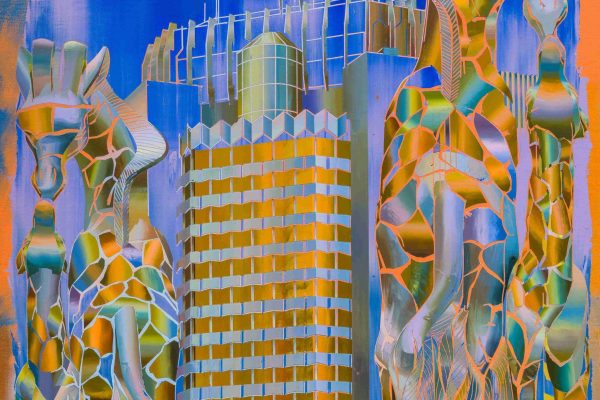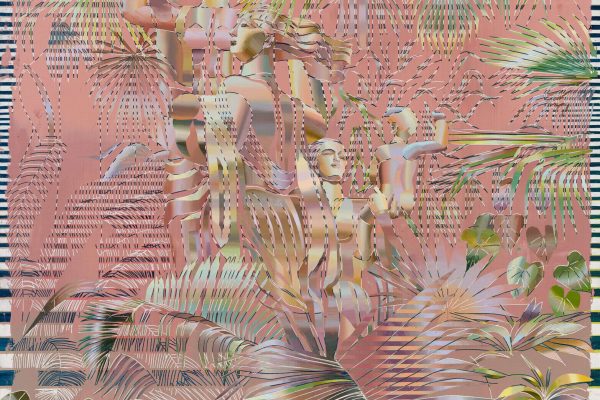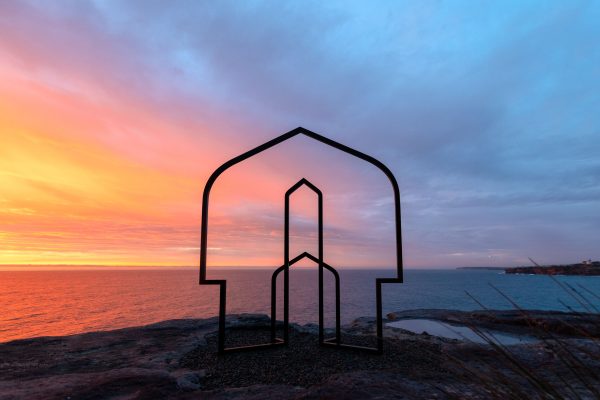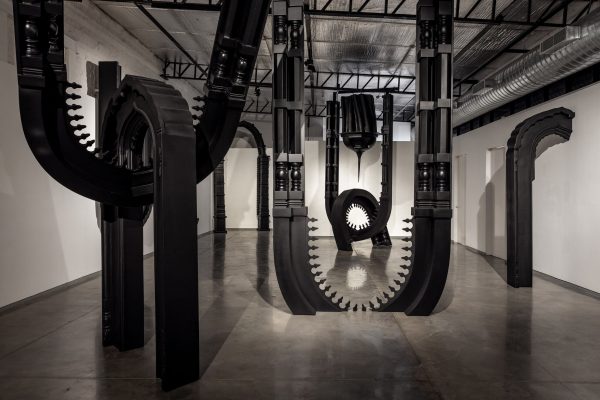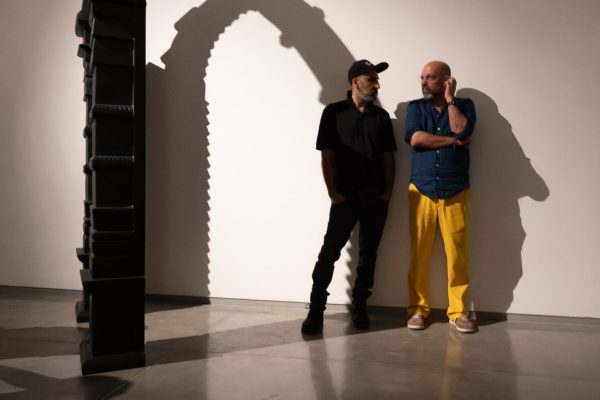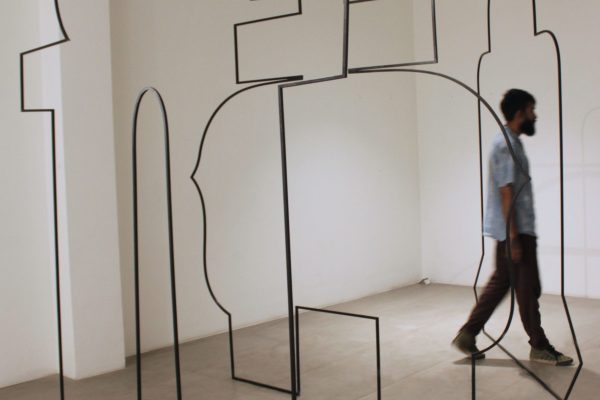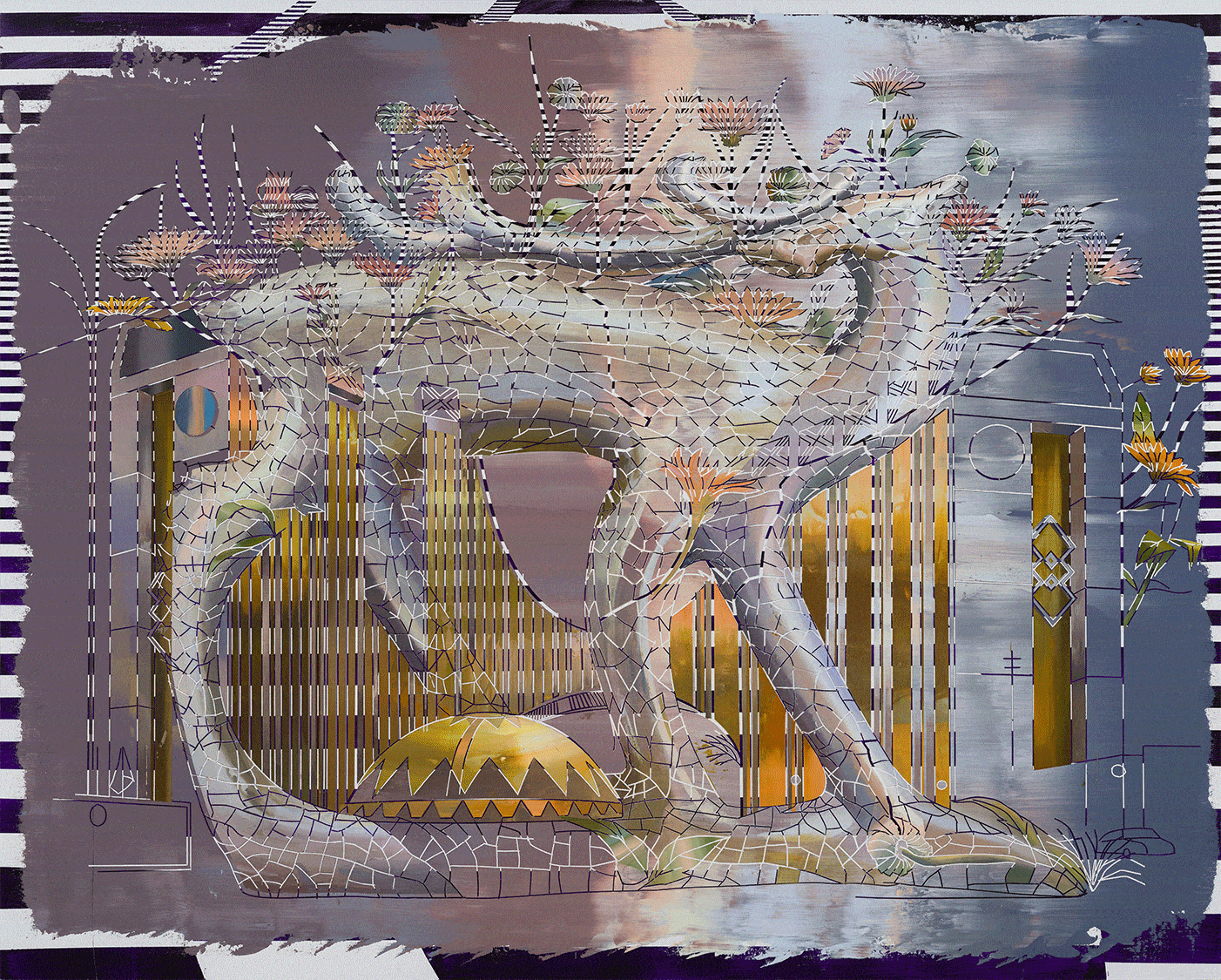
[1] Left to right: Cui Jie, Ceramic deer and the BIDC building, Lomé, 2025. Courtesy of the artist. [2] Installation view of Ayesha Singh, Hybrid Drawings, 2023 in the exhibition ‘Monumental Turns’, 2023 at Nature Morte, New Delhi. Courtesy of the artist.
Date: Tuesday, 28 October 2025
Time: 5.00PM – 6.30PM
Location: Mondrian Hotel Singapore, Jungle Ballroom, Level 3, 16A Duxton Hill, 089970 (Accessible from street level via Mirror Tunnel)
Taking place during the opening week of the Singapore Biennale 2025 (SB2025) this October, artists Cui Jie and Ayesha Singh will join TAF Artistic Director Xiaoyu Weng in conversation. Working with different mediums, both artists’ practice examines the materiality of architecture and space, making visible the power structures and political histories embedded in the built environment and urban infrastructure – as they relate to TAF’s 2025 research theme of Materiality.
Through spatial interventions that offer heterogeneous perspectives and layered viewpoints, their works invite viewers to reflect on complex relationships such as displacement, collective memory, and nation-building. During the talk, both artists will share several past projects and their works in the Biennale.
About TAF Conversation Series
Developed to manifest the foundation’s process-based and research-driven programming, TAF Conversation Series engages artists and their collaborators to respond, reflect, and shape TAF’s research concerns. Intently blurring the line between the work-in-progress and its finished form, TAF Conversation Series highlights the process and flux of artistic practice, where transformation is constant. TAF’s 2025 / 2026 research rubric is Materiality.
About the Artists
Cui Jie
Cui Jie creates paintings that, by incorporating diverse real and fantasy layers, explore the heterogeneous perspectives in various fields and geopolitical contexts. She meticulously deals with each sculptural and architectural layer, and represents the process through which the modern world has undergone enormous and monumental changes. Delicate and calm, gentle and emotionally charged, Cui’s landscape and interior paintings present comparative studies of cities and urban environments. For the artist, the cities she depicts are closely associated with her personal history: one can identify in the subject matter Bauhaus architectural principles, ideologies of Chinese propaganda art, Soviet communist aesthetics, or the Japanese Metabolism architectural movement, among others. In rendering specific cities, architectures, structures and landscapes, Cui explores the embedded histories of perspectives, and shrewdly proposes the political meanings of distance, angles and time.
Recent solo exhibitions include: Species as Gifts, West Bund, Shanghai, China (2023): Thermal Landscapes, Pilar Corrias, London, UK (2023); New Model Village, Focal Point Gallery, Southend-on-Sea (2022); Cui Jie: From Pavilion to Space Station, Centre for Chinese Contemporary Art, Manchester (2019-20); The Peak Tower, Pilar Corrias, London (2019); To Make a Good Chair, Antenna Space, Shanghai (2019); The Enormous Space, OCAT Contemporary Art Terminal, Shenzhen (2018); Latter, Former, mother’s tankstation, Dublin (2016); and Cui Jie, START Gallery, Jaffa (2015). Her work has been included in recent group shows such as Une nouvelle génération d’artistes Chine, Centre Pompidou, Paris, France (2024); New Model Village, Focal Point Gallery, Southend-on-Sea (2022); 12th Taipei Biennial, Taipei (2020); Para Site, Hong Kong (2019); Guangdong Time Museum, Guangdong (2018); MoMa PS1, New York (2017); Ullens Center for Contemporary Art, Beijing (2017); Metro Pictures, New York (2017); Cass Sculpture Foundation, Sussex (2016); K11, Hong Kong and Shanghai (2016); Ullens Center for Contemporary Art, Beijing (2015); Tampa Museum of Art, Florida (2014); Museum of Fine Arts, St. Petersburg (2014); Oklahoma City Museum of Art (2014); Tianhong Mei Heyuan Arts Center, Hangzhou (2013); and Minsheng Art Museum, Shanghai (2012).
Ayesha Singh
Ayesha Singh examines built architecture as spaces that embed power dynamics, expose the intricate politics inherent in nation-building exercises, migration, displacement, and functions as a location of identity–embodying aspiration, desire, and belief. Through critical spatial interventions that emphasize collaboration and coexistence, her works aim to counter established narratives to unpack layers of alteration and erasure of history through construction, restoration, and destruction. This results in Singh’s research being experienced through participatory performances with poetry, kinetic sculptures, sculptural line-drawings, public installations of scaffold and images that are created with community involvement, video, sculpture and often graphite drawings on paper.
She has exhibited in solo and group shows worldwide including at Sculpture by the Sea, Sydney (2024); NMACC, Mumbai (2024), Kiran Nadar Museum of Art, New Delhi (2023); The Wolfsonian, Miami (2023); Van Gogh House, London (2023–2022); Academy of Fine Arts Vienna, Austria (2021); Palazzo Madama/Museo Civico d’Arte Antica, Turin (2021); Museum of Sichuan Fine ArtsInstitute, Chongqing (2018); Yorkshire Sculpture Park, Yorkshire (2017); Hyde Park Art Centre, Chicago (2017); University of Cambridge, Cambridge (2014). Singh was recently awarded the Lui Shimming Art Foundation Grant, New York (2024), Cross-Hatchings: New Delhi-Perth Residency by Perth Institute of Contemporary Art (PICA) and Khoj, Perth (2023), the Van Gogh House Residency, London (2022) and received the Emerging Artist of the Year award from India Today (2020). In addition, she has received the Ellies Creator Award from Oolite Arts (former Art Centre/South Florida), USA (2018–19); the Civil Society Institute Fellowship at Vermont Studio Centre, USA (2018); and the Science & Culture Initiative Grant from the University of Chicago and the School of the Art Institute of Chicago (2017–18). Her work is a part of public collections including the Cincinnati Art Museum, USA; Burger Collection, Hong Kong; Yorkshire Sculpture Park, UK; Museum of Art and Photography (MAP), Bangalore; and the Kiran Nadar Museum of Art and The Partition Museum, both in New Delhi.



